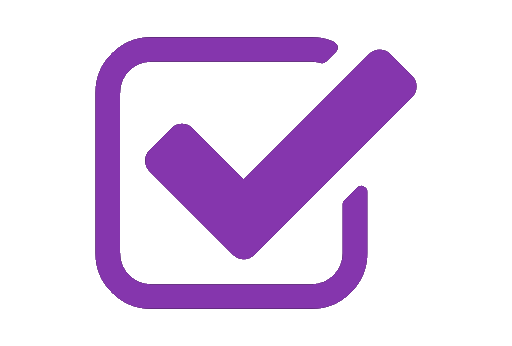Speech Therapy Software Proven EffectiveResearch shows that speech & language treatment software is effective. When creating speech therapy software we always ask How would a speech pathologist do it? Then we look at whether this accepted by the profession as the right way to do it and if there is evidence showing that treatment is effective. We then look at whether we can emulate what a speech therapist would do. Sometimes we can, such as with the Rosenbek Apraxia Hierarchy. In addition, there is research showing speech therapy software is effective. Our software is based on that research. There is also research showing that Bungalow programs, in particular are effective. Research on Specific Bungalow productsMoreSpeech.com, our new webapp is used in a recent research study. Improvement demonstrates the effectiveness of intensive at-home computer based applications like MoreSpeech Hibbs, V. et al. (2015), "Computer
Clinical Research on SentenceShaper shows improved speech Below is a brief summary of research studies about SentenceShaper as a language therapy tool, conducted at two sites: the University of Maryland School of Medicine in Baltimore, MD, and Moss Rehabilitation Research Institute in Philadelphia, PA. Studies at the University of Maryland School of Medicine
Before After (treatment) Results Research behind Bungalow's Software
Jaqueline Hinkley a renowned speech & language researcher (Associate
Professor, Communication Sciences & Disorders, University of South Florida;
noted in a National Aphasia Association
report: Bungalow has programs focusing on all the major skill areas and at hundreds of different difficulty levels. (Direction Following +Outloud, alone, has over 200 difficulty levels and 500,000 exercises and works on auditory comprehension, reading comprehension, sequencing and working memory) While no computerized therapy can (or should) replace a speech therapist, therapy software, such as the Aphasia Tutor series, can be very effective, as demonstrated by numerous clinical research. Researchers agree: Practice and Repetition helps patients. Technology can help.
Ground-breaking study shows Aphasia Software effectiveness
This peer-reviewed research study measured the patients' AQ (Aphasia Quotient) using the WAB (Western Aphasia Battery). Dr. Richard Katz, a well known researcher in the Speech/Language Pathology field, published this detailed study confirming the effectiveness (efficacy) of computer software for treating language-based deficits, specifically aphasia. He graphed the outcomes data and made several conclusions in favor of computerized therapy. He compared the following scenarios (graphed above):
Conclusions of the Study
|
Features the study's author thought were critical to the success, which we incorporated into the Bungalow PC programs and our new webapp
Bungalow's Treatment Software |
||
Critical Feature |
Classic PC Software |
MoreSpeech webapp |
| Designed for
independence Designed for patient to use independently without requiring a clinician to be present to provide feedback and to adjust the program. |
 |
 |
| Patients control how long they work Patients can work for as little or as long as they like. Patients can quit the program whenever they wish. |
 |
 |
| Difficulty can
be adjusted to patient's skill level You can change the number of choices (in multiple choice) and the complexity and vocabulary level of the stimulus. |
 |
 |
| Simple screens to minimize distraction |
 |
 |
| Response
format is consistent across the program (Matching, Filling, etc.) |
 |
 |
| Immediate
Feedback Shows patient their performance (score) after each exercise and lesson. |
 |
 |
| Visual feedback on performance (accuracy) |
 |
 |
| Program increases or decreases difficulty level automatically when patient reaches criteria, or is having difficulty. | Patient chooses level |
 |
| Program remembers the final Lesson from the last session so patient can start from that point. |
 |
 |
| *
Classic PC Software: This comparison applies to: Understanding Questions (which is based Understanding Stories (another program Dr. Katz did research on ) , Aphasia Tutor 1 thru 4, Synonyms..., and Understanding Questions, Sights'n Sounds 1 and 2, Numbers and Sounds and Direction Following ( as well as the +Outloud versions where applicable) |
||
The treatment used in this app incorporates the stimulation/facilitation model. Duffy & Coelho's (2001) provides an excellent description and analysis of Schuell's (1953, 1964, 1974) original theory and the subsequent work of researchers who support the concepts that
All lessons use an easy-to-understand match-to-sample
format, which remains virtually unchanged throughout the app
so as to minimize task and response requirements, allowing
the user to focus solely on the content of each lesson.
The Motor Speech/Apraxia of Speech lesson block is
adapted for the app from the 8-step treatment continuum
described by Rosenbek and his colleagues in their classic
Rosenbek article. Visual modeling of
articulatory posture and movement (referred to in their
article as v1) is provided in the app by videos detailing
closeups of the speaker's lips, tongue and jaw. Auditory
(referred to as a) and printed text (referred to as v2) are
also presented during presentation of the appropriate steps.
REFERENCES
Coelho,
C.A., Sinotte, M. P. & Duffy, J. R. Duffy (2001). Schuell's
Stimulation Approach to Rehabilitation (403-449). In Chapey,
R. (Ed.), Language Intervention Strategies in Aphasia and
Related Neurogenic Communication Disorders (Fifth Edition).
Philadelphia: Wolters Kluwer/Lippincott Willians & Wilkins.
Rosenbek, J. C., Lemme, M. L.,
Ahern, M. B., Harris, E. H., & Wertz, R. T. (1973). A
treatment for apraxia of speech in adults. Journal of Speech
and Hearing Disorders, 38, 462–472.
Schuell, H. (1953). Auditory
impairment in aphasia: Significance and retraining
techniques. Journal of Speech and Hearing Disorders, 18,
14-21.
Schuell,
H., Jenkins, J. J., & Jiménez-Pabón, E. (1964). Aphasia In
Adults. New York: Harper & Row.
Schuell, H. (1974). Aphasia
theory and therapy: Selected lectures and papers of Hildred
Schuell (Sies, L. F., Ed.). Baltimore: University Park
Press.